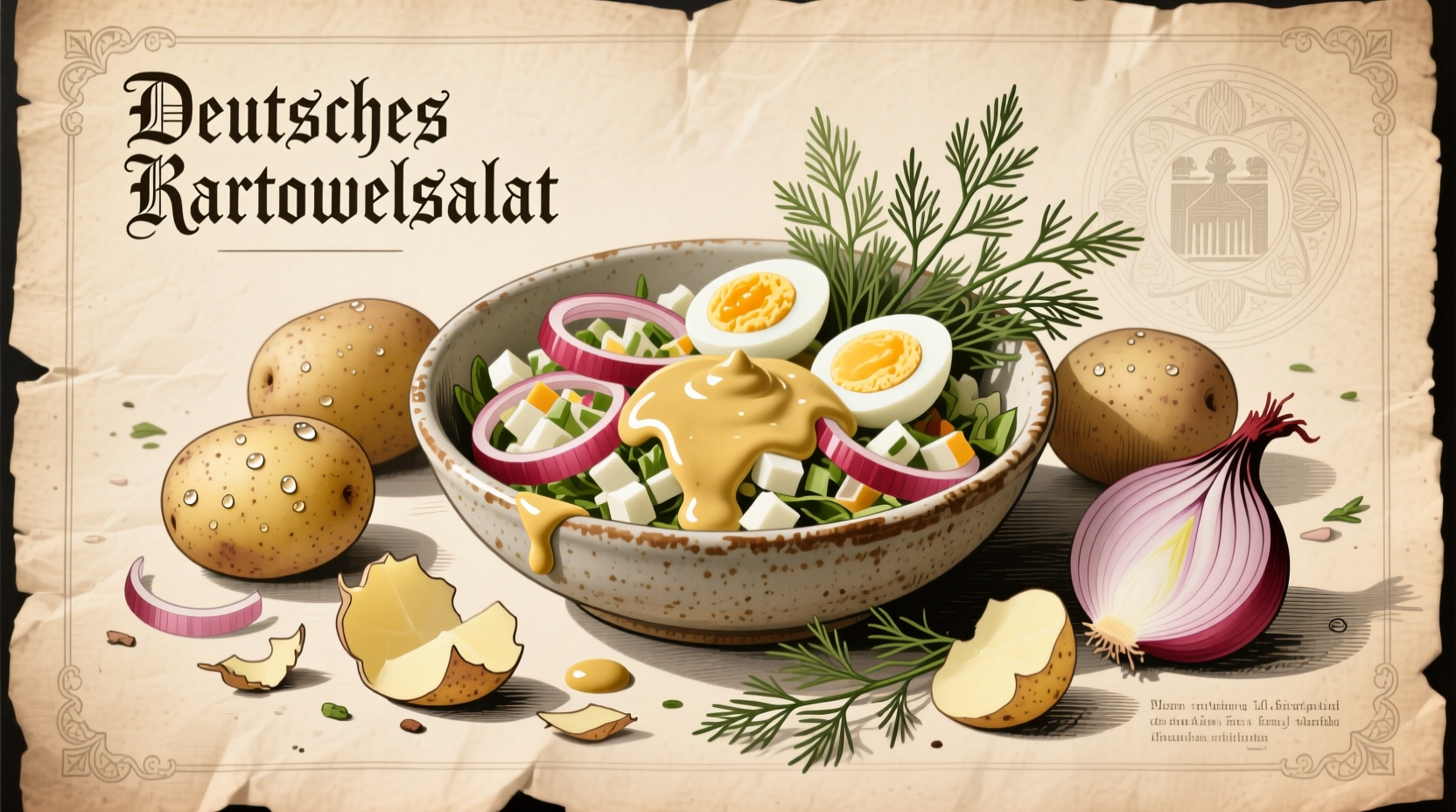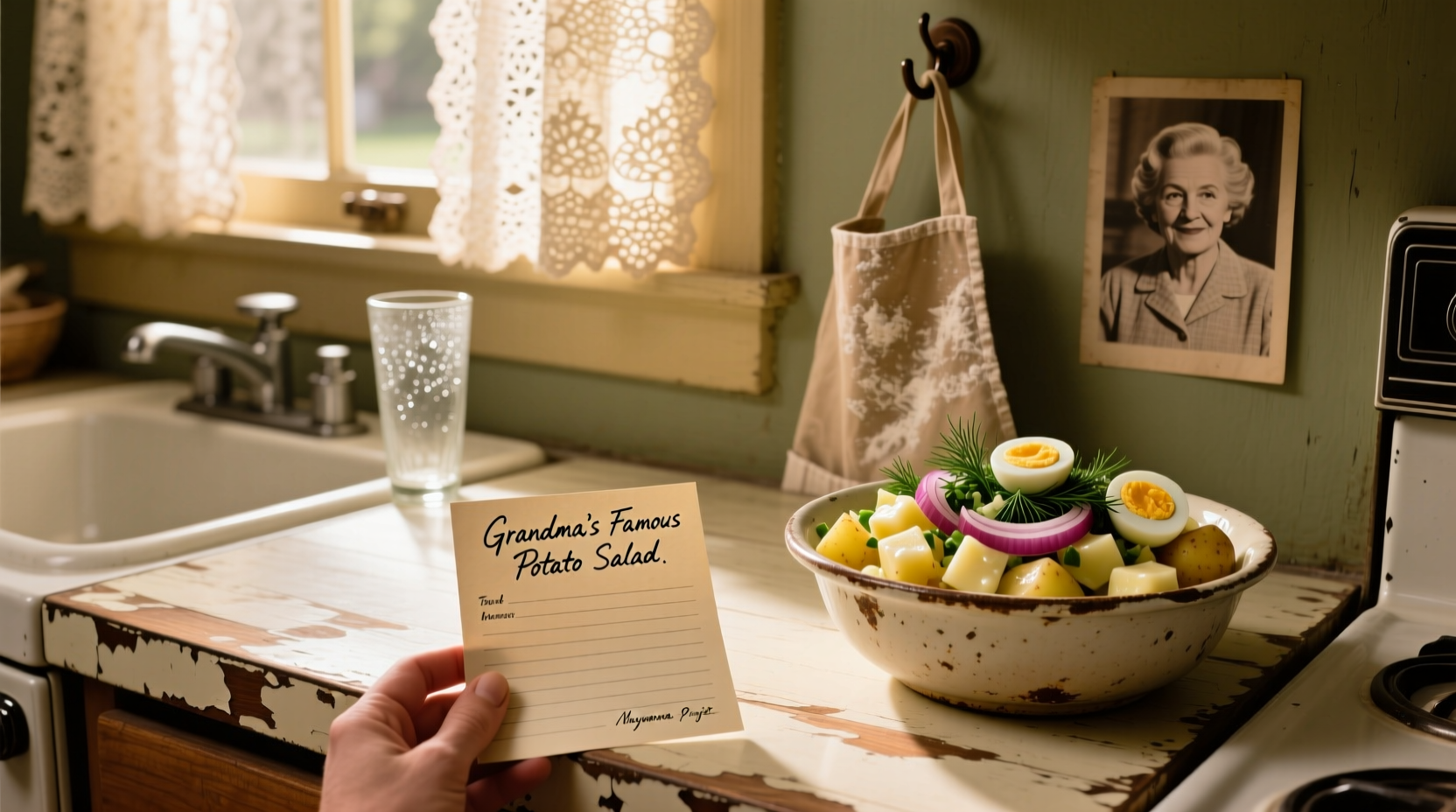When you ask who made the potato salad, you're touching on a culinary mystery with roots stretching back centuries. This beloved side dish didn't emerge from a single creator's kitchen but evolved through cultural exchange, agricultural developments, and regional adaptations. Understanding potato salad's journey reveals how a simple combination of humble ingredients became a worldwide phenomenon.
Tracing Potato Salad's Historical Timeline
| Time Period | Key Development | Historical Significance |
|---|---|---|
| 16th Century | Potatoes introduced to Europe from South America | Without this agricultural exchange, potato salad couldn't exist - potatoes took decades to gain acceptance as food |
| 1719 | First known potato salad recipe in Hannover, Germany | Appeared in "Königliche Höfische Kochbuch" featuring warm preparation with vinegar, oil, and herbs |
| 1845 | Henriette Davidis publishes definitive recipe | "Praktisches Kochbuch" standardized the cold version with vinegar dressing that became German tradition |
| Late 1800s | German immigrants bring recipe to America | Evolved with mayonnaise replacing vinegar in many regions, creating the American-style version |
| 1930s-1950s | Mayonnaise production becomes widespread | Commercial mayo availability transformed potato salad into the creamy version popular at modern picnics |
German Origins: The True Birthplace
While no single person can claim "who made the potato salad" first, culinary historians agree on German origins. The dish emerged in northern Germany during the 18th century when potatoes gained acceptance as food crops. Early versions differed significantly from today's picnic favorite:
- Warm preparation - Served hot or warm with vinegar-based dressing
- No mayonnaise - Predates commercial mayo production by centuries
- Bacon inclusion - Traditional German versions often included smoked bacon
- Vinegar focus - Tartness balanced the starchiness of potatoes
The confusion around who made the potato salad stems from regional variations that developed as the recipe traveled. German immigrants carried their Kartoffelsalat traditions to America in the 19th century, where ingredients and preferences transformed the dish.

American Transformation: From Vinegar to Mayo
The evolution of potato salad in America demonstrates how immigrant traditions adapt to new environments. When Germans settled in the United States, they brought their potato salad recipes but encountered different ingredients and culinary preferences.
Key transformation points include:
- Mayonnaise revolution - The 1907 invention of commercial mayonnaise by Richard Hellmann created the creamy texture Americans associate with potato salad today
- Regional variations - Southern versions often include mustard, while Midwestern versions feature sweet pickle relish
- Picnic culture - Potato salad became picnic staple in the 1920s as automobile travel made outdoor dining popular
- Commercial influence - Food companies promoted potato salad as easy party food through recipe cards and advertisements
Global Potato Salad Variations
Asking who made the potato salad reveals different answers across cultures. Each region developed unique interpretations based on local ingredients and culinary traditions:
- Germany - Warm vinegar-based with broth, mustard, and bacon (no mayo)
- America - Cold mayo-based with celery, onion, and hard-boiled eggs
- France - Salade Russe with beets, carrots, and fish eggs
- Japan - Sweet version with raisins and sometimes crab sticks
- Scandinavia - Often includes apples and dill with lighter dressing
These variations demonstrate how a simple concept adapts to local tastes. The German original bears little resemblance to the creamy American version that inspired countless "who made the potato salad" jokes at family gatherings.
Why the "Who Made the Potato Salad" Question Persists
The enduring question of who made the potato salad reflects more than culinary curiosity. At community events, potlucks, and family gatherings, potato salad often becomes a conversation starter because:
- Personal connection - Many families have signature recipes passed through generations
- Variation awareness - People recognize differences between versions and wonder about origins
- Cultural marker - The dish indicates regional or family heritage
- Memory trigger - Specific potato salads evoke nostalgia for particular events or people
Food historians at the Smithsonian National Museum of American History note that potato salad recipes frequently appear in family archives, often with handwritten notes about special occasions. These personal connections transform a simple side dish into a vessel for storytelling and memory-sharing.
Identifying Authentic Regional Styles
Understanding potato salad's history helps identify authentic regional variations. When encountering different versions, consider these markers:
- German authenticity - Should be served warm with vinegar dressing, no mayonnaise
- Midwestern American - Creamy texture with sweet pickle relish and paprika topping
- Southern American - Often includes yellow mustard and chopped pickles
- Scandinavian influence - Lighter dressing with fresh dill and apple chunks
The Library of Congress Foodways Collection documents how regional potato salad variations reflect settlement patterns, with German communities maintaining vinegar-based recipes while coastal areas adopted creamier versions influenced by available dairy products.
Frequently Asked Questions
Who invented potato salad originally?
While no single inventor exists, the first documented potato salad recipe appeared in German cookbook author Henriette Davidis' 1845 publication "Praktisches Kochbuch für die gewöhnliche und feinere Küche." German culinary traditions from the 18th century established the vinegar-based warm preparation that evolved into modern versions.
Why is potato salad associated with Germany?
Potato salad originated in northern Germany during the 18th century when potatoes gained acceptance as food crops. The traditional German "Kartoffelsalat" features a vinegar-based dressing and is typically served warm - quite different from the mayonnaise-based American version. German immigrants brought their recipe to America in the 19th century, where it evolved with available ingredients.
When did mayonnaise become part of potato salad?
Mayonnaise didn't become common in potato salad until the early 20th century. Richard Hellmann's commercial mayonnaise, introduced in 1907, made the creamy texture widely accessible. Before this, German-style potato salad used vinegar dressings. The shift to mayonnaise-based versions accelerated during the 1930s-1950s as commercial mayo production expanded and refrigeration became common in American homes.
What's the difference between German and American potato salad?
Traditional German potato salad is served warm with a vinegar-based dressing, often includes bacon, and contains no mayonnaise. American potato salad is typically served cold with a mayonnaise-based dressing, includes hard-boiled eggs and celery, and varies regionally with additions like mustard or sweet pickle relish. The German version functions as a main dish, while the American version serves as a side dish.
How did potato salad become popular in the United States?
Potato salad gained popularity in America through German immigration in the 19th century. Its transformation accelerated in the early 20th century with the commercial availability of mayonnaise and the rise of automobile travel, which made picnics and outdoor gatherings more common. Food companies promoted potato salad through recipe cards and advertisements as an easy party food, cementing its place in American culinary tradition by the 1950s.











 浙公网安备
33010002000092号
浙公网安备
33010002000092号 浙B2-20120091-4
浙B2-20120091-4